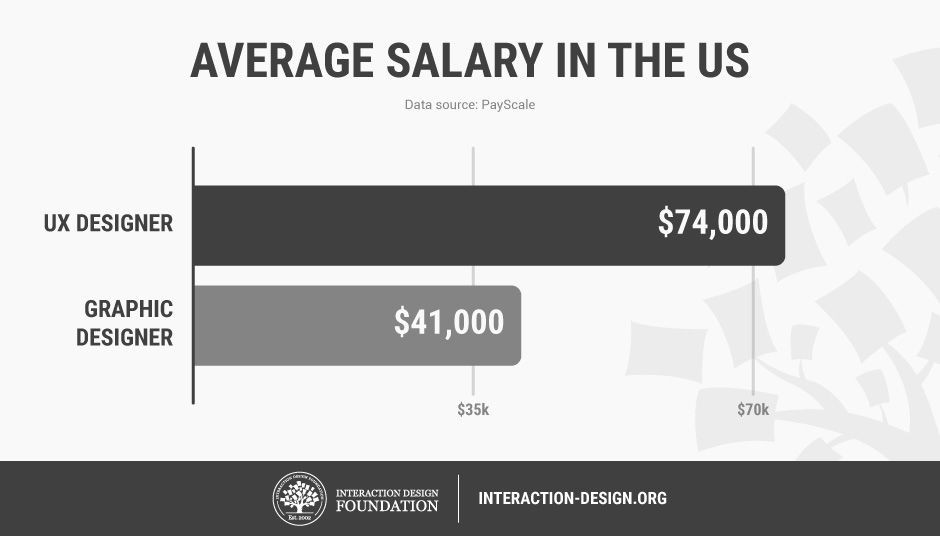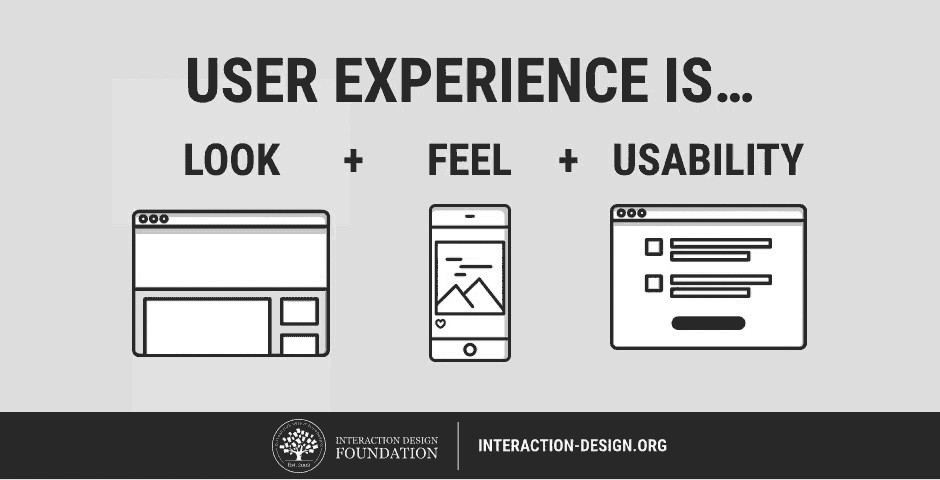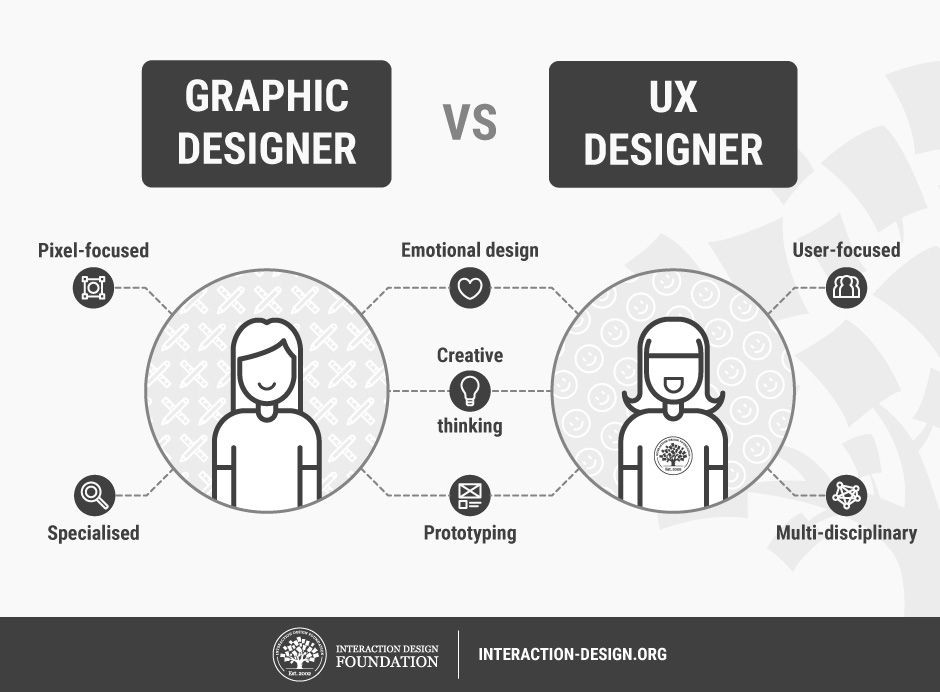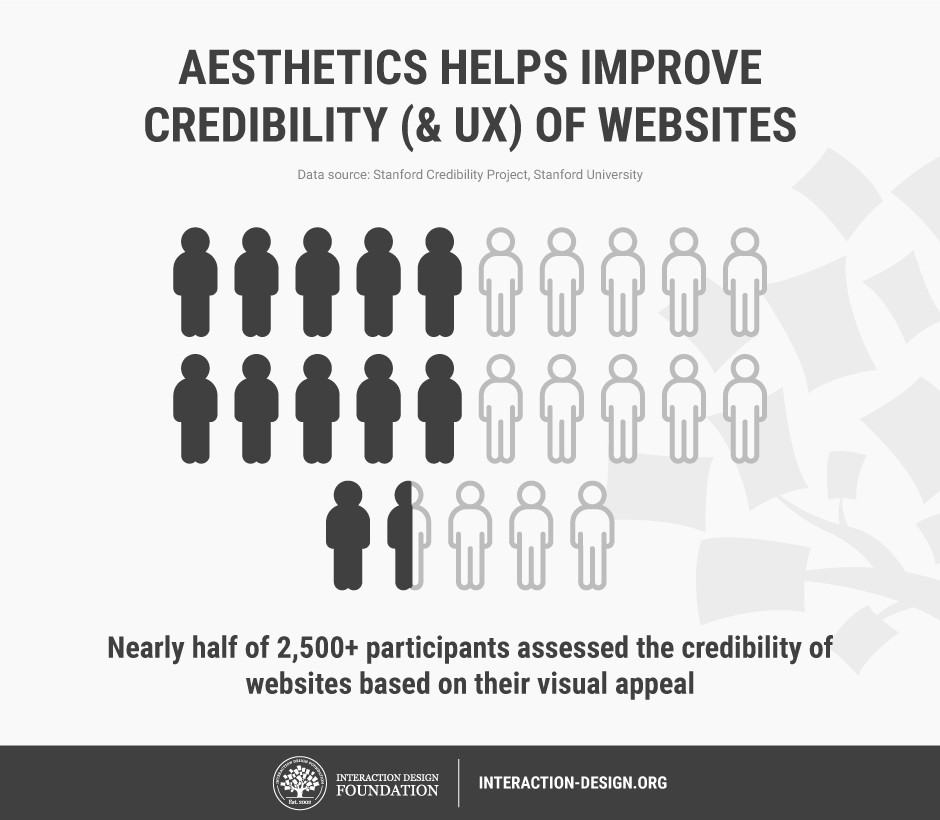Graphic designing explained! Are you curious about graphic designing and want to understand it better? At WHAT.EDU.VN, we provide clear and concise answers to your questions, helping you grasp the basics and beyond. Discover the elements, principles, and tools involved in visual communication, along with career opportunities and design trends. Dive into the world of visual communication, branding, and digital art!
1. What Is Graphic Designing?
Graphic designing is the art and profession of using visual elements—like typography, images, and colors—to convey messages and ideas. It’s about creating visual content that communicates effectively and aesthetically, whether for print or digital media. Think of it as visual problem-solving, where designers use their creativity and skills to meet specific communication goals.
According to the AIGA (the professional association for design), graphic designing serves to “structure and give form to communications” and “solve problems and create opportunities.”
1.1. What are the Key Elements of Graphic Designing?
The key elements of graphic designing include:
- Line: Used to create shapes, define edges, and guide the viewer’s eye.
- Shape: Two-dimensional areas with a recognizable boundary.
- Color: Evokes emotions, creates contrast, and provides visual interest.
- Typography: The art of arranging type to make written language legible, readable, and appealing.
- Texture: The visual feel of a surface.
- Space: The area around and between elements in a design.
Each element plays a crucial role in the overall composition and effectiveness of a design.
1.2. What are the Principles of Graphic Designing?
The principles of graphic designing are guidelines that help designers organize and arrange the visual elements effectively. These include:
- Balance: Creates stability and structure in a design.
- Contrast: Highlights differences between elements to create visual interest.
- Emphasis: Draws attention to specific elements in a design.
- Proportion: The scale and relationship of elements to each other.
- Hierarchy: Guides the viewer’s eye through the design, indicating importance.
- Rhythm: Creates a sense of movement and visual flow.
- Unity: Ensures all elements work together to create a cohesive design.
Understanding these principles is essential for creating visually appealing and effective designs.
1.3. What are the Tools Used in Graphic Designing?
Graphic designers use a variety of tools, both traditional and digital, to create their designs. The most common digital tools include:
- Adobe Photoshop: For image editing and manipulation.
- Adobe Illustrator: For creating vector graphics and illustrations.
- Adobe InDesign: For layout design and creating multi-page documents.
- Sketch: A popular tool for UI and web design.
- Figma: A collaborative web-based design tool.
Traditional tools might include pencils, pens, paper, and drawing boards. The choice of tools often depends on the specific project and the designer’s preferences.
2. Why is Graphic Designing Important?
Graphic designing is crucial for several reasons:
- Effective Communication: It helps convey messages clearly and effectively to the target audience.
- Brand Building: It creates a visual identity that represents a brand’s values and personality.
- User Engagement: It enhances user experience by making information visually appealing and easy to understand.
- Marketing and Advertising: It plays a key role in creating compelling marketing materials that attract and persuade customers.
- Professionalism: It adds a professional touch to all types of visual content, enhancing credibility and trust.
According to a study by the Design Management Institute, design-driven companies outperform the S&P 500 by 211%. This highlights the significant impact of graphic designing on business success.
2.1. How Does Graphic Designing Impact Branding?
Graphic designing is fundamental to branding because it creates the visual elements that represent a brand. This includes logos, color palettes, typography, and overall visual style. A well-designed brand identity helps a company:
- Stand Out: Differentiate itself from competitors.
- Build Recognition: Create a memorable and recognizable image.
- Communicate Values: Convey its mission and values to the audience.
- Establish Trust: Build credibility and trust with customers.
Consistent and effective graphic designing across all touchpoints ensures a strong and cohesive brand presence.
2.2. What Role Does Graphic Designing Play in Marketing?
In marketing, graphic designing is essential for creating visually appealing and persuasive materials that capture the audience’s attention. This includes:
- Advertisements: Designing ads that are eye-catching and memorable.
- Brochures and Flyers: Creating informative and visually engaging print materials.
- Social Media Graphics: Developing graphics that are optimized for social media platforms.
- Website Design: Designing websites that are user-friendly and visually appealing.
Effective graphic designing in marketing can significantly increase brand awareness, generate leads, and drive sales.
2.3. How Does Graphic Designing Enhance User Experience?
Graphic designing enhances user experience (UX) by making digital interfaces more intuitive, visually appealing, and easy to use. This includes:
- Visual Hierarchy: Organizing content in a way that guides the user’s eye and highlights important information.
- Usability: Ensuring that the design is functional and easy to navigate.
- Aesthetics: Creating a visually pleasing design that enhances the user’s overall experience.
- Accessibility: Making the design accessible to users with disabilities.
Good graphic designing in UX leads to increased user satisfaction, engagement, and loyalty.
3. What are the Different Types of Graphic Designing?
Graphic designing encompasses a wide range of specializations, each with its own unique focus and skill set. Some of the most common types include:
- Brand Identity Design: Creating visual elements that represent a brand.
- Marketing and Advertising Design: Designing marketing materials for print and digital media.
- User Interface (UI) Design: Designing the visual layout and interactive elements of digital interfaces.
- Publication Design: Designing layouts for books, magazines, and newspapers.
- Packaging Design: Designing the packaging for products.
- Motion Graphics Design: Creating animated graphics for videos, websites, and other media.
- Environmental Design: Designing visual elements for physical spaces, such as signage and exhibits.
3.1. What is Brand Identity Design?
Brand identity design involves creating the visual elements that represent a brand’s identity. This includes:
- Logo Design: Creating a unique and memorable logo that represents the brand.
- Color Palette: Selecting colors that reflect the brand’s personality and values.
- Typography: Choosing fonts that are consistent with the brand’s style.
- Visual Guidelines: Developing a set of rules for how the brand’s visual elements should be used.
A strong brand identity helps a company establish a clear and consistent presence in the market.
3.2. What is Marketing and Advertising Design?
Marketing and advertising design focuses on creating visual materials that promote products, services, or brands. This includes:
- Print Ads: Designing advertisements for magazines, newspapers, and other print media.
- Digital Ads: Creating ads for websites, social media, and other digital platforms.
- Brochures and Flyers: Designing informative and visually appealing print materials.
- Email Marketing: Creating email templates and graphics for marketing campaigns.
Effective marketing and advertising design can significantly increase brand awareness and drive sales.
3.3. What is User Interface (UI) Design?
User interface (UI) design involves creating the visual layout and interactive elements of digital interfaces, such as websites, mobile apps, and software applications. This includes:
- Layout Design: Arranging elements in a way that is visually appealing and easy to navigate.
- Icon Design: Creating icons that represent different functions and features.
- Typography: Choosing fonts that are legible and consistent with the overall design.
- Color Palette: Selecting colors that enhance the user experience.
Good UI design makes digital interfaces more intuitive, efficient, and enjoyable to use.
4. What Skills are Needed to Become a Graphic Designer?
To become a successful graphic designer, you need a combination of technical skills, creative abilities, and soft skills. Some of the most important skills include:
- Design Principles: A strong understanding of design principles, such as balance, contrast, and hierarchy.
- Typography: Knowledge of typography and how to use fonts effectively.
- Color Theory: Understanding color theory and how to use colors to create different moods and effects.
- Software Proficiency: Proficiency in design software, such as Adobe Photoshop, Illustrator, and InDesign.
- Creativity: The ability to generate original and innovative design ideas.
- Communication: Strong communication skills to effectively present and explain design concepts.
- Problem-Solving: The ability to solve design problems and find creative solutions.
- Attention to Detail: A keen eye for detail and the ability to produce high-quality work.
4.1. How Important is Creativity in Graphic Designing?
Creativity is a fundamental skill for graphic designers. It allows them to:
- Generate Original Ideas: Develop unique and innovative design concepts.
- Solve Problems: Find creative solutions to design challenges.
- Stand Out: Create designs that are memorable and differentiate from the competition.
- Connect with the Audience: Evoke emotions and create a meaningful connection with the target audience.
While technical skills are important, creativity is what sets great graphic designers apart.
4.2. What Role Does Communication Play in Graphic Designing?
Communication is crucial for graphic designers because they need to:
- Understand Client Needs: Accurately interpret and understand the client’s goals and requirements.
- Present Design Concepts: Effectively communicate design ideas and explain the rationale behind them.
- Collaborate with Teams: Work effectively with other designers, developers, and stakeholders.
- Receive Feedback: Listen to and incorporate feedback from clients and colleagues.
Strong communication skills ensure that the final design meets the client’s needs and effectively communicates the intended message.
4.3. How Does Technology Impact Graphic Designing Skills?
Technology has a significant impact on the skills needed for graphic designing. Today’s designers must be proficient in:
- Design Software: Mastering tools like Adobe Photoshop, Illustrator, and InDesign.
- Digital Platforms: Understanding the requirements and best practices for designing for various digital platforms, such as websites, social media, and mobile apps.
- Web Design Principles: Knowledge of web design principles, such as responsive design and user experience.
- Emerging Technologies: Keeping up with new technologies and trends, such as virtual reality and augmented reality.
Continuous learning and adaptation to new technologies are essential for staying competitive in the field of graphic designing.
5. How Can You Learn Graphic Designing?
There are several ways to learn graphic designing, depending on your learning style, budget, and career goals. Some of the most common options include:
- Online Courses: Taking online courses from platforms like Coursera, Udemy, and Interaction Design Foundation.
- Classroom Courses: Attending in-person courses at design schools, community colleges, or universities.
- University Degrees: Pursuing a bachelor’s or master’s degree in graphic designing.
- Self-Study: Learning through books, tutorials, and online resources.
- Mentorship: Working with an experienced designer who can provide guidance and feedback.
5.1. What are the Benefits of Taking Online Graphic Designing Courses?
Online graphic designing courses offer several benefits:
- Flexibility: Study at your own pace and on your own schedule.
- Affordability: Often more affordable than traditional classroom courses.
- Accessibility: Access courses from anywhere in the world.
- Variety: Choose from a wide range of courses covering different topics and skill levels.
- Expert Instruction: Learn from experienced designers and industry professionals.
Platforms like Coursera and Udemy offer a variety of courses, including specializations and professional certificates. According to a study by eLearners.com, 77% of academic leaders believe that online learning is as good as or better than traditional classroom learning.
5.2. How Can a University Degree Help in Graphic Designing?
A university degree in graphic designing can provide a comprehensive education and prepare you for a successful career. Benefits include:
- In-Depth Knowledge: Gain a deep understanding of design principles, theory, and history.
- Technical Skills: Develop proficiency in design software and techniques.
- Portfolio Development: Build a strong portfolio of work to showcase your skills.
- Networking Opportunities: Connect with professors, alumni, and industry professionals.
- Career Services: Access career counseling, internships, and job placement assistance.
However, it’s important to consider the cost and time commitment of a university degree compared to other learning options.
5.3. What is the Role of Self-Study in Graphic Designing?
Self-study can be a valuable supplement to formal education or a primary method of learning graphic designing. It allows you to:
- Learn at Your Own Pace: Focus on the topics and skills that are most relevant to your interests and career goals.
- Explore Different Styles and Techniques: Experiment with various design styles and techniques without the constraints of a structured curriculum.
- Stay Updated: Keep up with the latest trends and technologies in the field.
- Build a Portfolio: Create personal projects and contribute to open-source projects to build a portfolio of work.
Resources for self-study include books, tutorials, online communities, and design blogs.
6. What are the Career Opportunities in Graphic Designing?
Graphic designing offers a wide range of career opportunities in various industries. Some of the most common job titles include:
- Graphic Designer: Creates visual concepts for print and digital media.
- Web Designer: Designs the layout and visual elements of websites.
- UI Designer: Designs the user interface for digital applications.
- Art Director: Oversees the visual style and images for various projects.
- Creative Director: Leads the creative team and develops overall creative strategies.
- Brand Manager: Manages the visual identity and brand messaging for a company.
- Marketing Specialist: Creates marketing materials and campaigns using graphic designing skills.
6.1. How Can Graphic Designing Skills Help in Web Development?
Graphic designing skills are highly valuable in web development because they enhance the visual appeal and user experience of websites. Designers with graphic designing skills can:
- Create Visually Appealing Layouts: Design layouts that are both aesthetically pleasing and functional.
- Choose Effective Color Palettes: Select colors that enhance the website’s branding and user experience.
- Design Custom Graphics and Icons: Create unique visual elements that enhance the website’s identity.
- Improve User Navigation: Design intuitive navigation systems that make it easy for users to find information.
A strong understanding of graphic designing principles can significantly improve the quality and effectiveness of web development projects.
6.2. What is the Role of a Graphic Designer in Advertising Agencies?
In advertising agencies, graphic designers play a crucial role in creating visual materials that promote products, services, or brands. They work on:
- Print Ads: Designing advertisements for magazines, newspapers, and other print media.
- Digital Ads: Creating ads for websites, social media, and other digital platforms.
- Campaign Materials: Designing brochures, flyers, posters, and other materials for advertising campaigns.
- Brand Development: Creating visual identities and branding guidelines for clients.
Graphic designers in advertising agencies must be creative, detail-oriented, and able to work under tight deadlines.
6.3. How Can Graphic Designing Skills Contribute to Freelancing?
Graphic designing skills are highly marketable for freelancing because there is a constant demand for visual content in various industries. Freelance graphic designers can:
- Offer a Wide Range of Services: Provide services such as logo design, branding, web design, and marketing materials.
- Work with Diverse Clients: Work with clients from different industries and geographic locations.
- Set Their Own Rates: Determine their own rates based on their skills, experience, and project complexity.
- Work Remotely: Work from anywhere in the world with an internet connection.
Platforms like Upwork and Fiverr connect freelance graphic designers with clients seeking their services.
7. What are the Current Trends in Graphic Designing?
Graphic designing is a constantly evolving field, with new trends and styles emerging all the time. Some of the current trends include:
- Minimalism: Simple and clean designs with plenty of white space.
- Bold Typography: Using large and eye-catching fonts to create visual impact.
- Vibrant Colors: Using bright and saturated colors to create a sense of energy and excitement.
- Abstract Illustrations: Using abstract and geometric shapes to create unique visual elements.
- Retro Styles: Incorporating design elements from past decades, such as the 1980s and 1990s.
- 3D Design: Using 3D elements and animations to create immersive visual experiences.
- Inclusivity and Accessibility: Designing with inclusivity and accessibility in mind, ensuring that designs are usable by people with disabilities.
7.1. How Does Minimalism Impact Graphic Designing?
Minimalism has a significant impact on graphic designing by emphasizing simplicity, clarity, and functionality. Minimalist designs:
- Focus on Essential Elements: Eliminate unnecessary elements and focus on the core message.
- Use White Space Effectively: Create visual balance and clarity by using plenty of white space.
- Employ Simple Typography: Choose clean and legible fonts that enhance readability.
- Use a Limited Color Palette: Select a few key colors that create a cohesive and harmonious design.
Minimalist designs are often perceived as elegant, modern, and timeless.
7.2. What Role Do Vibrant Colors Play in Modern Design?
Vibrant colors play a significant role in modern design by:
- Creating Visual Impact: Capturing attention and making designs more memorable.
- Evoking Emotions: Creating different moods and feelings through the use of color psychology.
- Enhancing Brand Recognition: Reinforcing brand identity through the consistent use of color.
- Adding Energy and Excitement: Making designs more dynamic and engaging.
Vibrant colors are often used in combination with other design elements, such as bold typography and abstract illustrations.
7.3. How is 3D Design Shaping the Future of Graphic Designing?
3D design is shaping the future of graphic designing by:
- Creating Immersive Experiences: Allowing designers to create more realistic and engaging visual experiences.
- Adding Depth and Dimension: Making designs more visually interesting and dynamic.
- Expanding Creative Possibilities: Opening up new avenues for creativity and innovation.
- Enhancing User Interaction: Creating interactive 3D elements that enhance user engagement.
3D design is increasingly being used in various applications, such as advertising, gaming, and virtual reality.
8. What are Some Tips for Improving Graphic Designing Skills?
Improving graphic designing skills requires continuous learning, practice, and experimentation. Some helpful tips include:
- Study the Fundamentals: Master the basic principles of design, such as balance, contrast, and hierarchy.
- Practice Regularly: Dedicate time to practice your skills, even if it’s just for a few minutes each day.
- Experiment with Different Styles: Try out different design styles and techniques to broaden your skills.
- Seek Feedback: Ask for feedback from other designers and incorporate their suggestions into your work.
- Stay Updated: Keep up with the latest trends and technologies in the field.
- Build a Portfolio: Create a portfolio of your best work to showcase your skills and attract clients.
- Take on Challenges: Push yourself to take on challenging projects that stretch your abilities.
- Join a Community: Connect with other designers and participate in online communities to share ideas and learn from others.
8.1. How Can Feedback Help in Improving Graphic Designing Skills?
Feedback is essential for improving graphic designing skills because it:
- Provides Different Perspectives: Offers insights from other designers and stakeholders.
- Identifies Areas for Improvement: Highlights weaknesses and areas where you can improve your skills.
- Encourages Growth: Motivates you to learn and grow as a designer.
- Enhances Communication: Helps you develop your communication skills by explaining and defending your design choices.
Seek feedback from trusted sources, such as mentors, peers, and clients, and be open to constructive criticism.
8.2. What is the Importance of Building a Strong Portfolio?
A strong portfolio is crucial for graphic designers because it:
- Showcases Your Skills: Demonstrates your abilities and expertise to potential clients and employers.
- Highlights Your Best Work: Presents your best projects in a visually appealing and organized manner.
- Differentiates You from Competitors: Sets you apart from other designers by showcasing your unique style and approach.
- Attracts Clients and Employers: Makes it easier for you to find freelance work or secure a full-time position.
Include a variety of projects in your portfolio to demonstrate your versatility and range of skills.
8.3. How Can Staying Updated with Trends Benefit Graphic Designers?
Staying updated with the latest trends in graphic designing can:
- Keep Your Work Fresh: Ensure that your designs are current and relevant.
- Expand Your Knowledge: Expose you to new styles, techniques, and technologies.
- Improve Your Creativity: Inspire you to experiment with new ideas and approaches.
- Increase Your Marketability: Make you more attractive to clients and employers who are looking for designers with up-to-date skills.
Follow design blogs, attend conferences, and participate in online communities to stay informed about the latest trends.
Do you have more questions about graphic designing or any other topic? Visit WHAT.EDU.VN today to ask your questions and receive free answers from our community of experts. At WHAT.EDU.VN, we are committed to providing you with quick, accurate, and helpful information to satisfy your curiosity and help you learn. Our services are completely free, so don’t hesitate to reach out. Contact us at 888 Question City Plaza, Seattle, WA 98101, United States, or via WhatsApp at +1 (206) 555-7890. For more information, visit our website at WHAT.EDU.VN.
Here’s a summary of FAQs related to graphic designing:
| Question | Answer |
|---|---|
| What are the key elements of graphic designing? | Line, shape, color, typography, texture, and space. |
| What are the principles of graphic designing? | Balance, contrast, emphasis, proportion, hierarchy, rhythm, and unity. |
| What tools are used in graphic designing? | Adobe Photoshop, Illustrator, InDesign, Sketch, Figma, pencils, pens, and paper. |
| How does graphic designing impact branding? | Creates visual elements that represent a brand, helping it stand out, build recognition, and communicate values. |
| What role does graphic designing play in marketing? | Creates visually appealing materials that capture attention, increase brand awareness, and drive sales. |
| What are the different types of graphic designing? | Brand identity design, marketing and advertising design, UI design, publication design, packaging design, motion graphics design, and environmental design. |
| What skills are needed to become a graphic designer? | Design principles, typography, color theory, software proficiency, creativity, communication, problem-solving, and attention to detail. |
| How can you learn graphic designing? | Online courses, classroom courses, university degrees, self-study, and mentorship. |
| What are the current trends in graphic designing? | Minimalism, bold typography, vibrant colors, abstract illustrations, retro styles, 3D design, and inclusivity and accessibility. |
| How can staying updated with trends benefit graphic designers? | Keeps your work fresh, expands your knowledge, improves your creativity, and increases your marketability. |




Don’t hesitate to ask more questions on what.edu.vn to learn even more!

